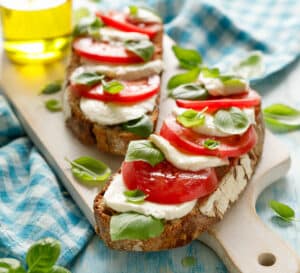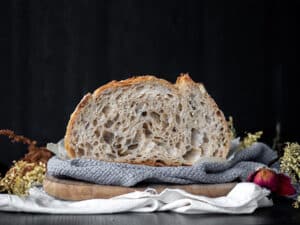Over 5,000 years of history have proven that bread is beneficial for its taste and energy properties, as well traditional values and economical worth. However, very recently, this age-old foodstuff has become the subject of criticism, if not prohibited from the diet, for sufferers of celiac disease. We shine the spotlight on the exclusive constituent element of bread known as gluten.
The merits of gluten-free bread
Bread – a traditional foodstuff with natural benefits
Worthwhile from a dietary point of view, bread is even recommended in certain diseases (diabetes, hypercholesterolemia, endogenous or exogenous hypertriglyceridemia, etc.). The recognised benefits of bread are as follows:
- Its high slow sugar content enables gradual digestion and long-term energy release. It is recommended for kids at breakfast to prevent mid-morning hunger pangs or for sportsmen and -women preparing for long periods of exertion…
- Its high fibre content promotes intestinal transit.
- Its low fat content makes it a low-calorie foodstuff.
As with any foodstuff, excessive consumption is not recommended (150 g per meal is a good recommendation), for the following reasons:
- Since bread is deficient in certain proteins, it does not suffice alone. The daily diet must also contain dairy produce, eggs, meat, fish.
- Being in high in fibre, in higher doses it can also irritate the intestines and slow the assimilation of minerals and vitamins (especially wholemeal bread in a child’s diet).
The problem with gluten…
Recently highlighted, but still hard to detect, celiac disease, which is triggered by the absorption of gliadin, is thought to affect around 1 in 1500 people in Europe and nearly 1 in 100 in Maghreb… The only treatment that proves beneficial, based on current knowledge, is a dietary therapy aimed at totally excluding gluten from the sufferer’s diet.
Gliadin is one of the proteins in wheat, rye, barley and oats that helps form gluten. Eliminating it from the diet therefore results in two highly disruptive consequences:
- Technical: gluten is a basic constituent of bakery goods used for creating a network in dough and promoting proper gas retention. The use of substitutes (wheat, rice, corn, millet or buckwheat starch, etc.…) is more likely to result in a less tastier, flatbread than the usual voluminous loaf of bread or pastry.
- Social: strictly eliminating it from the diet cuts out bread, pizza, pasta, pancakes and sweet pastries. In an environment where cereal products have important cultural roots, not being able to eat them leads to feelings of social exclusion/frustration, since the disease is not discernible from the outside.
Finding a technical solution that excludes gluten can help remedy the social exclusion that some sufferers can experience. For this reason, the teams at Lesaffre have been working to develop a gluten-free breadmaking technique that helps preserve the appearance, texture and taste of bread wherever possible.




